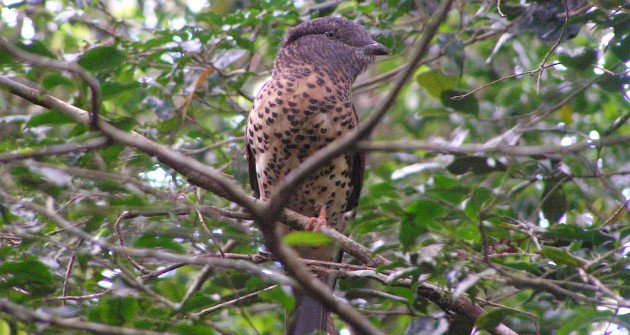PROTECT YOUR DNA WITH QUANTUM TECHNOLOGY
Orgo-Life the new way to the future Advertising by Adpathway Osprey carrying fish at Chippokes Plantation State Park on the James River, Virginia (photo from Wikimedia Commons)
Osprey carrying fish at Chippokes Plantation State Park on the James River, Virginia (photo from Wikimedia Commons)3 August 2025
In June the Center for Conservation Biology (CCB) at William & Mary reported that aerial surveys of osprey nests indicate the population on the ocean side of Virginia’s Eastern Shore has collapsed in just 38 years — from 83 nests in 1987 to just 9 today, and the chicks in those nine nests are starving.
A similar collapse is brewing in Chesapeake Bay where many pairs do not lay eggs at all and many nests fail completely. In the Bay ospreys are producing only 0.6 to 0.9 chicks per nest though they need 1.15 chicks per nest to maintain the population.
Ospreys are just the Canary in the Coal Mine. Something is wrong in the Chesapeake.
Though the osprey (Pandion haliaetus) decline began in the region 15 years ago it reached alarming proportions in the last five years. CCB launched intensive studies to find out why. By 2023 they knew that osprey chicks were starving in the main stem of Chesapeake Bay, that osprey chick nutrition depends on availability of Atlantic menhaden and that menhaden are no longer available because of overfishing.
Due to its high energy density, menhaden is a critical prey item for osprey populations along the Atlantic Coast and within the Chesapeake Bay. … Researchers within The Center believe that the ongoing decline in young production is driven by overharvest of Atlantic menhaden. Forage fish such as menhaden, anchovy, sardine, capelin and herring play significant roles in marine ecosystems throughout the world. These small schooling fish are responsible for transferring energy from plankton to higher-level predators such as osprey. When forage fish are overharvested the marine food web is broken and higher-level predators suffer.
— The Center for Conservation Biology documents unprecedented osprey nest failures within the lower Chesapeake BaySo why are Atlantic menhaden (Brevoortia tyrannus) overfished? It’s not because we eat them.
Mehaden are relative small (15 inches) oily fish that are a favorite food of sea birds, striped bass, bluefish, sea trout, tunas and sharks.
We don’t eat menhaden because they don’t taste good but we turn them into fish meal, fish oil and bait. According to the Virginia Institute of Marine Science: “More pounds of menhaden are landed each year than any other fish in the United States, with coast-wide landings ranging from 300,000 to 400,000 metric tons since the mid-1970s.”
Menhaden are easy to catch because they travel in dense schools like this.
 School of Atlantic menhaden near the surface (photo by Jim Moore via Flickr Creative Commons license)
School of Atlantic menhaden near the surface (photo by Jim Moore via Flickr Creative Commons license)Their schools are easy to see from above.
 Two schools of menhaden off the NJ coast. Largest is 15m on longest side (photo from ResearchGate: Combining Techniques for Remotely Assessing Pelagic Nekton: Getting the Whole Picture)
Two schools of menhaden off the NJ coast. Largest is 15m on longest side (photo from ResearchGate: Combining Techniques for Remotely Assessing Pelagic Nekton: Getting the Whole Picture)Fishing boats surround them with a purse net and draw in the strings.
 Menhaden fishing with purse seine nets (photo from Wikimedia Commons)
Menhaden fishing with purse seine nets (photo from Wikimedia Commons)Dumped in the hold, the description on this photo says these fish will be turned into fertilizer and pet food.
 Menhaden in the hold of a fishing vessel (photo from Wikimedia Commons)
Menhaden in the hold of a fishing vessel (photo from Wikimedia Commons)Because of overfishing, especially in the Chesapeake, there are fewer and fewer young menhaden growing up to spawn and thus fewer menhaden overall. We can’t see how this is affecting striped bass, bluefish, tuna and sharks but we can see what’s happening to osprey which may well mirror what’s happening underwater. Osprey are predicting the collapse of the marine food web in the Chesapeake.
If we don’t change the fishing limits, the lack of fish will automatically limit what we catch and the Chesapeake could well become like Georges Bank in the 1990s.
p.s. These photos of osprey at successful nests are from the James River, a tributary of Chesapeake Bay.
 Osprey pair at nest in Chippokes Plantation State Park on the James River, Virginia (photo from Wikimedia Commons)
Osprey pair at nest in Chippokes Plantation State Park on the James River, Virginia (photo from Wikimedia Commons)






















 English (US) ·
English (US) ·  French (CA) ·
French (CA) ·